Cape
Going Green
Photo Contest Winners
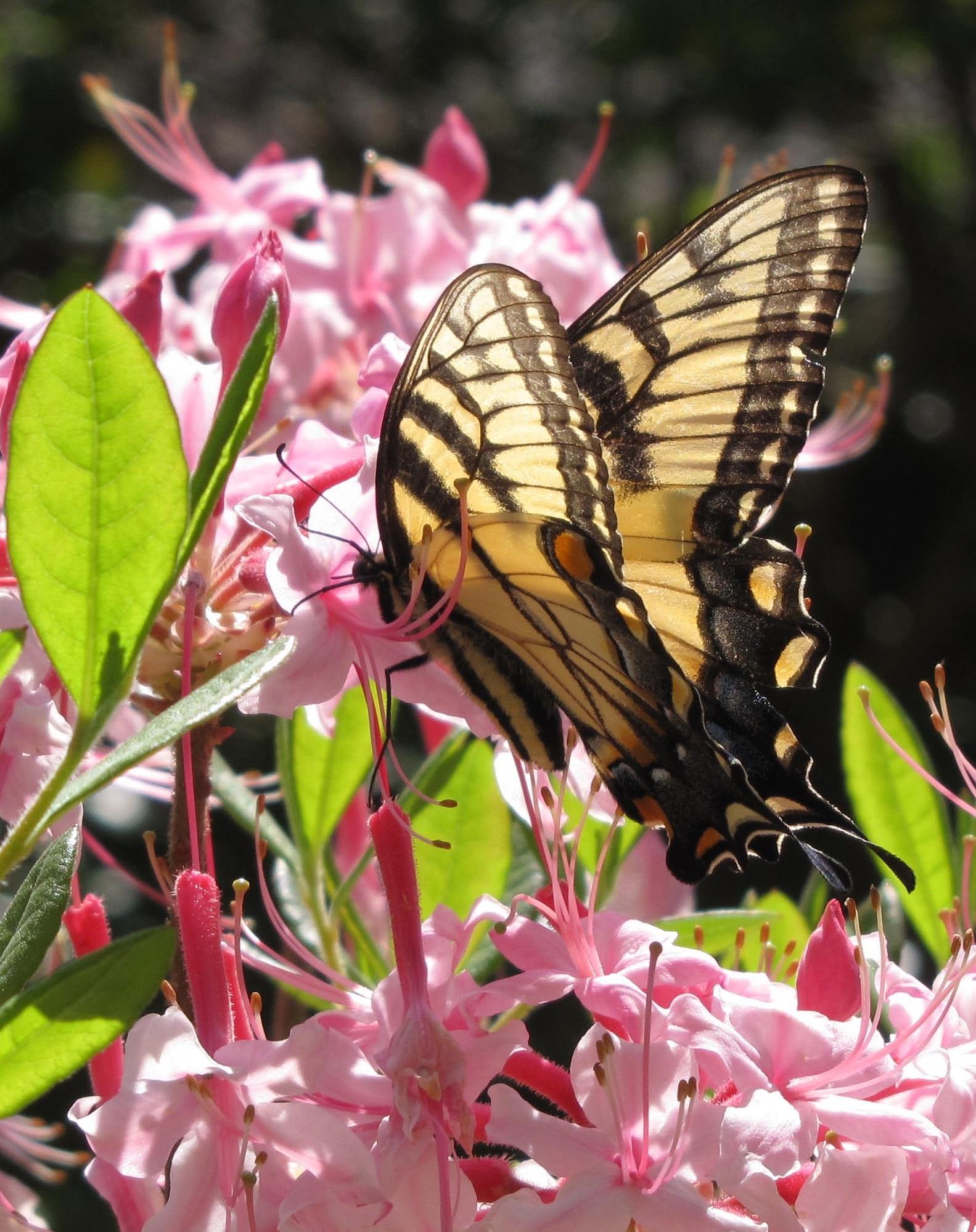
Letter from the Editor
I budget just a few dollars every year for new plants for my yard. A couple years back I was excited to bring home columbine plants from a big box store: three full, robust-looking hybrids with blue flowers I thought would look pretty along my front walk. Later, at a Hobby Greenhouse Club sale, I bought three native columbine plants (aquilegia canadensis) and planted the whole lot in the same bed. Taller and more delicate, these natives were overshadowed by the showy blue hybrids.
In autumn I cover all my beds with a mulch of leaves to protect the plants from winter’s cold and drought. That next year, the hybrids came out again, and bloomed, although they remained a rather stunted little clump all season. The natives reappeared, a little taller and a little fuller than before. And at their base I noticed tiny columbines, babies started from the seeds the mother plants dropped the year before. This year, the natives are back in full bloom, and not a trace of the sterile hybrids can be seen.
My corner lot sees a lot of traffic, so I have been reluctant to invest much in plantings along the sidewalk strip. Whatever I set out is vulnerable to being trodden on, driven over, mowed under, or buried under necessary utility work. But my native plants, after eons of learning to adapt, have learned to handle even the roughest handling, and come back each year even stronger.
So one at a time, instead of buying the showy hybrid exotics, I have been putting in local plants:

butterfly-weed and American beautyberry, false indigo, Joe Pye weed, Echinacea, parsley and fennel. Not only do they feed the local bees and butterflies, come spring I know they will emerge from their leafy mulch even stronger than before. The native clematis is blooming now, and I can’t wait to see my first caterpillar of the season.
Valerie L. Robertson EditorContents
3 A Call for Backyard Biodiversity
8 Your Ecological House
Sustainable Forestry—Ancient Oaks and Green Homes
9 Wilmington Tree Awards
10 It Starts With Me
11 Earth Day 2011—Local Celebrations
11 90 Days to Earth Day
12 Earth Day Guide: Pender County Earth Day at Poplar Grove
13 Earth Day Guide: Wilmington Earth Day Festival
at Hugh MacRae
15 Wild Bird & Garden Nature Photo Contest Winners
16 Andy Wood— The Naturalist’s Corner: Simple Questions, One Simple Answer: We Need to Pick Up After Ourselves
17 Portrait of an Artist: Charlie Rawls
18 Food & Business News
22 On the Road
Cape Fear’s Going Green is a quarterly publication promoting eco-friendly resources and lifestyles in the Lower Cape Fear River Basin.
Publisher & Editor in Chief: Valerie Robertson
Sister City: Eugene, Oregon (Voted “Greenest City” 2006 by The Green Guide)
Eugene Contributing Editor: Mary Robertson
Advisors & Editorial Contributors: Gene Ayscue, Michelle Bridges, Jennifer Butler, Nicole Carpenter, Shannon Culpepper, Frank Headley, Mitzy Jonkheer, the Kuuskoski family, Adeline Robertson, Douglas Tallamy, Philip S. Wenz, Charley Winterbauer, Andy Wood.
Cape Fear’s Going Green Going Green Publications
P. O. Box 3164
Wilmington, NC 28406 (910) 547-4390
www.goinggreenpublications.com
Cape Fear’s Going Green is available by subscription or on our Web site. Print copies are available at more than sixty area eco-friendly businesses and locations, including:
Angela’s Pepper-Pickled Foods, B + O Design Studio, Old Growth Riverwood, Pomegranate Books, Port City Java, Progressive Gardens, Sambuca, Sapona Green Building Center, Tidal Creek Co-op, UNCW, WHQR, and the Shelton Herb Farm booth at area farmers’ markets.
Editorial: If you have story ideas or calendar items to suggest, email us at editor@goinggreenpublications.com, or call (910) 547-4390.
Advertising information: Email ads@goinggreenpublications.com.
Cape Fear’s Going Green is distributed free through Brunswick, Columbus, New Hanover, Onslow, and Pender counties. If you have a business and would like to receive multiple copies for the public to pick up, please contact us.
A Call for Backyard Biodiversity
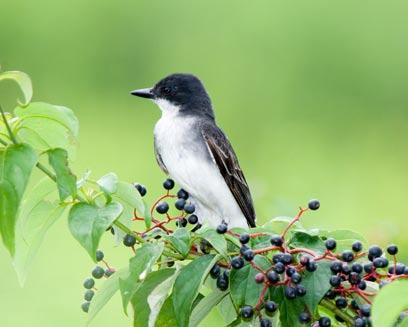 by Douglas Tallamy
by Douglas Tallamy
You have probably never thought of your property as a wildlife preserve representing the last chance we have to sustain plants and animals that were once common throughout the U.S. But that is exactly the role our suburban and urban landscapes are now playing—and will play even more in the near future.
If this is news to you, it’s not your fault. We were taught from childhood that the plantings in our yards are made mostly for beauty; they allow and encourage us to express our artistic talents, to have fun, and to relax. And whether we like it or not, the way we landscape our properties is seen by our neighbors as a statement of our wealth and social status.
But no one has taught us that we have forced the plants and animals that evolved in North America (our nation’s biodiversity)
to depend more and more on humandominated landscapes for their continued existence. We have always thought that biodiversity was “happy somewhere out there in nature”: in our local woodlot, or perhaps our state and national parks. We have heard nothing about the rate at which species are disappearing from our neighborhoods, towns, counties, and states. Even worse, we have never been taught how vital biodiversity is for our own well-being.
We Have Taken It All
The population of the U.S., now over 304 million people, has doubled since most of us were kids, and continues to grow by roughly 8,640 people per day. All of those additional souls—coupled with cheap gas, our love affair with the car, and our quest to own ever larger homes— have fueled unprecedented development that continues to sprawl over 2 million additional acres per year (the size of Yellowstone National Park). We have connected all of our developments with four million miles of roads; their paved surface is five times the size of New Jersey.
Somewhere along the way we decided to convert the forests that used
to cover our living and working spaces into huge expanses of lawn dotted with a few small, mostly nonnative trees. So far we have planted over 62,500 square miles—some 40 million acres—in lawn. Each weekend we mow an area eight times the size of New Jersey to within an inch of the soil and then congratulate ourselves on a job well done.
over are pristine. Nearly all are secondgrowth forests that have been thoroughly invaded by alien plants like autumn olive, multiflora rose, bush honeysuckle, privet, Oriental bittersweet, buckthorn, and Japanese honeysuckle. More than 3,400 species of alien plants have invaded over 200 million acres of the U.S.
To nature lovers, these are horrifying statistics. I stress them so that we can clearly understand the challenge before us. We have turned 54 percent of the lower 48 states into a suburban/urban matrix, and 41 percent more into various forms of agriculture. That’s right: We humans have taken 95 percent of nature and made it unnatural.
In addition to serving as nectar plants to feed butterflies and moths, this Coastal or Dwarf Azalea (Rhododendron antlanticum) is a host plant for the Azalea Sphinx Moth. Because butterflies and moths are very limited in which plants their caterpillars can eat, planting larval plants is even more important than planting nectar plants.
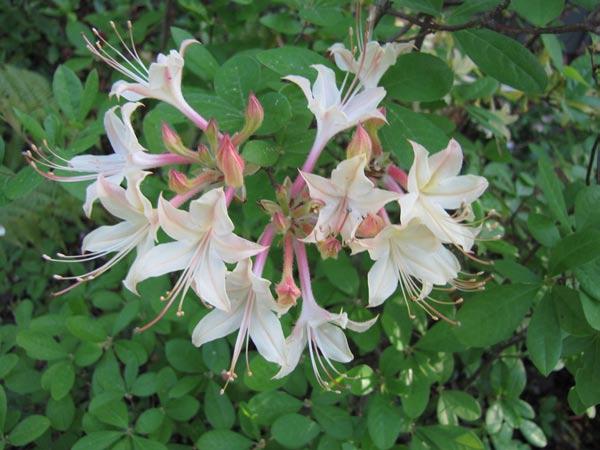
And it’s not as if those little woodlots and “open spaces” that we have not paved
But does this matter? Are there consequences to turning so much land into the parklike settings humans enjoy? Absolutely, both for biodiversity and for us. Our fellow creatures need food and shelter to survive and reproduce, and in too many places we have eliminated both. State Natural Heritage Centers have estimated that as many as 33,000 species of plants and animals in the U.S are now imperiled—too rare to perform their role in their ecosystem. These species can be considered functionally extinct. The songbirds that brighten spring mornings have been in decline since the 1960s, having lost 40 percent of their numbers so far. One hundred twenty-seven species of
Acclaimed author and ecologist Douglas Tallamy explains the reasons behind the decline of native flora and fauna, and how we can work to reverse it from our own backyards.photo by Douglas Tallamy The native Alternate Leaf Dogwood is able to provide nourishment and habitat to many insect and bird species, such as the kingbird above. photo by Cary Paynter
What to Plant Where
Certain native staples are essential to any forest restoration within the suburban/urban matrix:
A Call for Backyard Diversity – continued neotropical migrants are in steep decline. In fact, a survey of our nation’s bird populations, commissioned by former President Bush, has found that one-third of our nation’s birds are endangered.
• New England: Sugar maple, white pine, and paper birch
• Mid-Atlantic: White oak, American beech, river birch, and red maple
• Midwest: Bur oak, honeylocust, and crabapple
• Deep South: Live oak, loblolly pine, and tupelo
• Northwest: Douglas-fir, yellow cedar, and beaked hazelnut
However, diversity is the real key to restoring native plant communities.
In New England, for example, consider replacing Norway spruce with Atlantic white cedar, or northern white cedar underplanted with native hawthorns and alternate-leaf dogwood. These plants produce abundant bird food in the form of insects and berries. In mid-Atlantic states, sycamore is valuable in riparian restorations and biological corridors through suburban backyards, despite its susceptibility to early season anthracnose. Also consider one of the hickories - shagbark for rich, welldrained soils, and pignut, shellbark, or mockernut for upland plantings. The conifer conundrum in the mid-Atlantic states can usually be solved with eastern redcedar, a wonderful evergreen that can be an accent plant anchoring a suburban home, an effective, fast-growing screen, or a formal alley bordering a long driveway.
Midwest oak-savannah ecosystems can benefit from adding understory plantings of bottlebrush buckeye, rough dogwood, pawpaw, and wafer ash. Wafer ash, incidentally, is the primary host for the giant swallowtail butterfly, while pawpaw is the sole host for zebra swallowtails. And disease-resistant American elms are now available for urban restorations east of the Mississippi.
In the Deep South and Southeast, sourwood, the southern sugar maple, and water oak are valuable additions to native plant communities, as well as abundant groupings of native azaleas like pinxterbloom, flame, and pinkshell azaleas. We hope that we can soon liberally plant disease-resistant American chestnuts in the piedmont and mountainous regions of the South as well. In drier areas of the Pacific Northwest, consider adding Garry oak and western hemlock to street and riparian plantings, underplanted with Pacific dogwood, blue elderberry, and moosewood viburnum when appropriate.
Why We Need Biodiversity
For most of us, hearing such numbers triggers only a passing sadness; few people feel personally threatened by the loss of biodiversity. Here’s why you should. Biodiversity losses are a clear sign that our own life-support systems are failing. The ecosystems that support us—that determine the carrying capacity of the earth and our local spaces—are run by biodiversity. It is biodiversity that generates oxygen and cleans water, creates topsoil out of rock, buffers extreme weather events like droughts and floods, pollinates our crops, and recycles the mountains of garbage we create every day.
And now, with human-induced climate change threatening the planet, it is biodiversity that, if given half a chance, will suck that carbon out of the air and sequester it in living plants. Humans cannot live as if they are the only species on this planet. Why? Because it is other species that create the ecosystem services that are so essential to us. Every time we force a species to extinction, we are encouraging our own demise. Despite the disdain with which we have treated it in the past, biodiversity is not optional.
Parks Are Not Enough
I am often asked why the habitats we have preserved within our park system are not enough to save most species from extinction. Years of research by evolutionary biologists have shown that the area required to sustain biodiversity is pretty much the same as the area required to generate it in the first place. The consequence of this simple relationship is profound. Since we have taken 95 percent of the U.S. from nature, we can expect to lose 95 percent of the species that once lived here unless we learn how to share our living, working, and agricultural spaces with biodiversity. Ninety-five percent of all plants and animals! Now there is a statistic that puts climate-change predictions of extinction to shame.
And studies of habitat islands with known histories, such as Barro Colorado Island in the Panama Canal and Ashdown Forest in England, suggest that these predictions are accurate. Species are lost in the same proportion in which a habitat is reduced in size. The good news is that extinction takes a while, so if we start sharing our landscapes with other living things soon, we should be able to save much of the biodiversity that still exists.
Redesigning Suburbia
What will it take to give our local animals what they need to survive and reproduce on our properties? Native plants, and lots of them. This is a scientific fact deduced from thousands of studies about how energy moves through food webs.
garden designs & consultation
Sandy Wood, Hampstead 910-270-9451
habitats@ymail.com
Cultivating more than just gardens since 1992
Here is the general reasoning: All animals get their energy directly from plants, or by eating something that has already eaten a plant. Insects are the group of animals most responsible for passing energy from plants to the animals that can’t eat plants. This fact is what makes insects such vital components of healthy ecosystems. So many animals depend on insects for food (e.g., spiders, reptiles, amphibians, rodents, and 96 percent of all terrestrial birds) that removing insects from an ecosystem spells its doom.
But that is exactly what we have tried to do in our suburban landscapes. For over a century we have favored ornamental
biodiversity
A Call for Backyard Diversity – continued landscape plants from China and Europe over those that evolved right here. If all plants supported wildlife equally, that would be fine. But every plant species protects its leaves with a mixture of nasty chemicals that makes them distasteful at best, and downright toxic at worst. With few exceptions, only insect species that have shared a long evolutionary history with a particular plant lineage have developed the physiological adaptations required to disarm the chemical defenses in their host’s leaves. They have developed over time to eat only the plants with those particular chemicals.
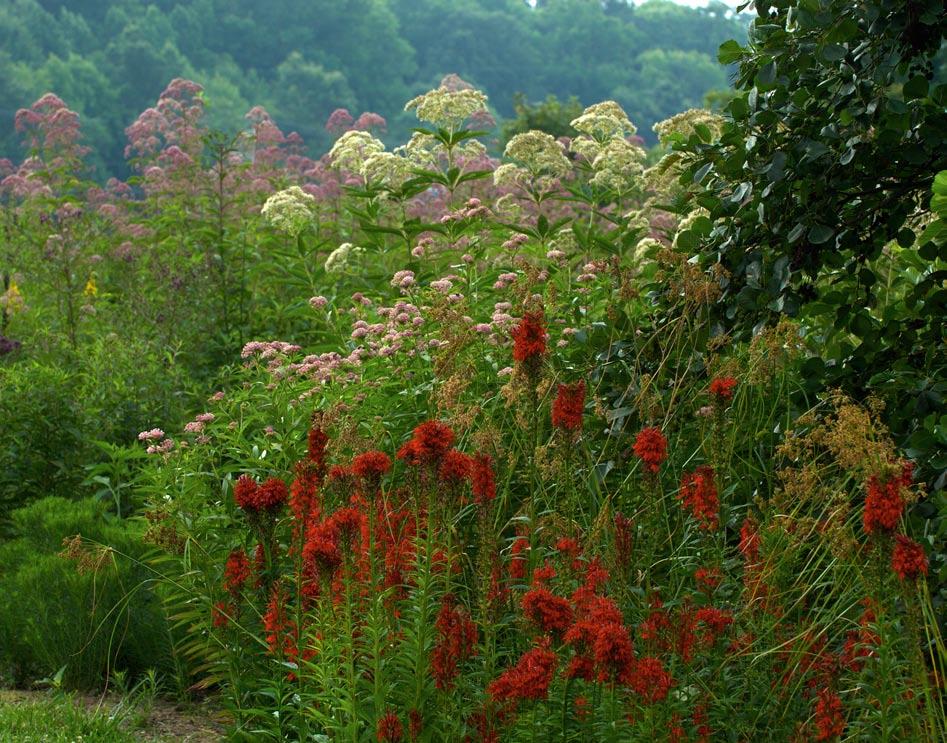
When we present insects from Pennsylvania, for example, with plants that evolved on another continent, chances are those insects will be unable to eat them. We

used to think this was good. Kill all insects before they eat our plants! But a plant that cannot pass on the energy it has harnessed cannot fulfill its role in the food web.
We have planted Kousa dogwood, a species from China that supports only a few insect herbivores, instead of our native flowering dogwood (Cornus florida), which supports 117 species of moths and butterflies alone. In hundreds of thousands of acres, we have planted goldenraintrees, ginkgos, and dawn redwoods from China instead of one of our beautiful native oaks, and in doing so we have lost the chance to grow and support 534 species of caterpillars, all of them nutritious bird food. My research has shown that alien ornamentals support 29 times fewer animals than do native ornamentals.
Plants Matter
In the past we have ignored the vital role plants play in our landscapes. Plants, of course, are the only organisms that capture energy from the sun and turn it into the simple sugars and carbohydrates: the food that supports nearly all the food
webs on earth. Every time we bulldoze a native plant community, we are reducing the amount of food available for our fellow creatures. In fact, the amount of life that can exist in an area is directly proportional to the amount of vegetation in that area. Because plants have physical structure, they also provide housing for animals.
We can no longer landscape with aesthetics as our only goal. We must also consider the function of our landscapes if we hope to avoid a mass extinction that we ourselves are not likely to survive. As quickly as possible, we need to triple the number of native trees in our lawns and underplant them with the understory and shrub layers absent from most managed landscapes. Homeowners can do this by planting the borders of their properties with native trees such as white oaks (Quercus alba), black willows (Salix nigra), red maples (Acer rubrum), green ashes (Fraxinus pennsylvanica), black walnuts (Juglans nigra), river birches (Betula nigra), and shagbark hickories (Carya ovata).
(continued on page 6)
and
industry.
biodiversity
A Call for Backyard Diversity – continued
Those trees should be underplanted with woodies like serviceberry (Amelanchier canadensis), bottlebrush buckeye (Aesculus parviflora), arrowwood (Viburnum dentatum), hazelnut (Corylus americanus), and blueberries (Vaccinium spp).
Studies have shown that even modest increases in the native plant cover on suburban properties raise the number and species of breeding birds, including birds of conservation concern. As gardeners and
stewards of our land, we have never been so empowered to help save biodiversity from extinction, and the need to do so has never been so great. All we need to do is plant native plants!
This article originally appeared in the Autumn 2009 issue of American Forests magazine.
Douglas Tallamy is professor and chair of the Department of Entomology and Wildlife Ecology at the University of Delaware.
Program is free and open to the public. Come learn how important your backyard is to the birds! (Seating is first come, first served.)
Sponsored by:
Friends of the New Hanover County Public Library
North Carolina Native Plant Society

Growing Wild Nursery
Secret Gardener
Cape Fear’s Going Green
North Carolina Coastal Federation
Toxic Free NC
B + O Design Studio

Sustainable Design Collaborative
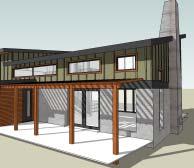
Progressive Gardens
A Natural Approach
During the on-site training sessions, trainees will be able to apply the techniques they learn in the classroom to existing homes. These green retrofits are being performed through a collaboration with Wilmington Area Rebuilding Ministries (WARM), a non-profit organization that performs repairs on the homes of economically disadvantaged individuals.
Cape Fear Audubon Society’s Bird-Friendly Habitat Award Program
To encourage people to convert their yard (habitat) to one that is more suitable for our wildlife, Cape Fear Audubon is giving awards to those that meet the BirdFriendly Habitat Criteria. Visit the Cape Fear Audubon Society’s web at http:// www.capefearaudubon.org and go to the conservation tab to get more information on how to participate in this program. There is no cost to participate and you will be doing something for the environment.
Additional grant partners are Building Performance Specialists (BPS) and Sapona Green Building Center. BPS will provide instruction, energy audits and project management for the retrofits. Sapona will act as purchasing agent and materials supplier.
General registration is now open. The complete list of workshop topics and dates is posted below:
The is a non-profi the mission building CFGBA through industry public. second informational and open
See Vol. 3, Issue 1 of Cape Fear’s Going Green, available online, for articles on rebuilding native habitat.
May 12 – Building Science/ House Characterization
2010
Cape Fear’s Going Green Environmental Book Club!

We discuss everything from currents to classics. Come join us at 7pm at Old Books on Front Street 249 No. Front Street
May 3: Douglas Tallamy’s Bringing Nature Home in preparation for his lecture May12 call (910)547-4390 for details
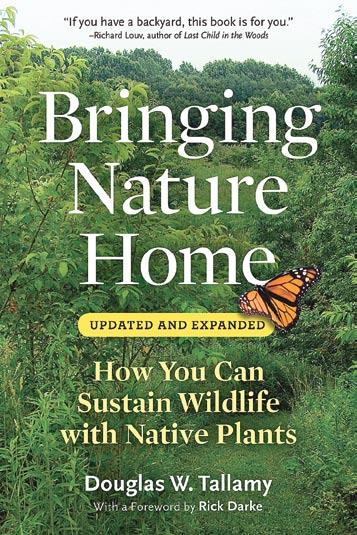
up-to-date action misagriculture and Produces Systems Systems environment, provide Carolina and largest Services stormwater Provides Stormwater involvement mission. (CCA)–and marine conserve, future the public.


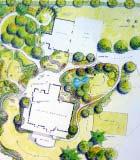

dwarf
continued from page 10
Events at Cape Fear Museum

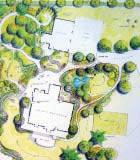
B.W. Wells: Pioneer Ecologist Special Exhibit Now Open
Explore the breathtaking nature photography of ecologist B.W. Wells and discover his passion for the flora and fauna of the Lower Cape Fear region. Inspired in 1920 by the beautiful wildflowers of Pender County’s Big Savannah, Wells dedicated himself to documenting North Carolina’s native plants. In this exhibit, the story of Wells’ efforts to preserve the Big Savannah is told through a wealth of stunning photographs he took to document his research.
Dogwood Alliance
Free with paid Museum admission. Cape Fear Museum admission is free for New

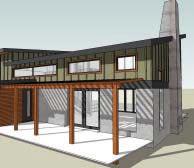
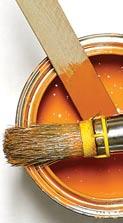

Propagation Workshop June 5

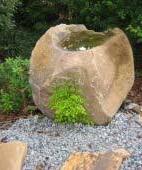

Nonprofit works to educate people about the importance of forests and the negative environmental impacts of business-as-usual paper production. Having achieved systemic change throughout the paper industry through public campaigns against office super stores--the largest retail paper sellers in the U.S.--they are now addressing protection for Southern forests and forests all over the world. www.dogwoodalliance.org
Earth Day Alliance

Organizers of the Lower Cape Fear Celebration of Earth Day.
www.wilmingtonearthday.com

Alistair Glen, owner of Growing Wild Nursery in Pender County, will teach techniques for the propagation of Southeast Coast native plants. The workshop will be Sunday, June 5, from 2-4 p.m. and is sponsored by the SE Coast chapter of the NC Native Plant Society.
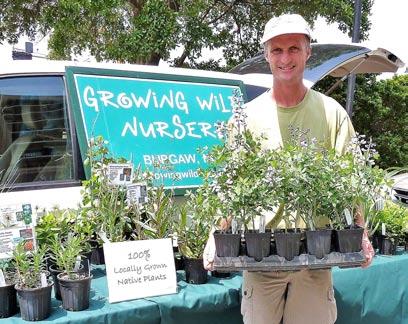
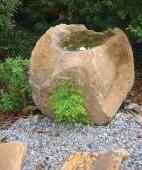
Electric Vehicle Automobile Association

Pre-registration is required, and workshop is limited to 20 participants. Halyburton Park Visitors Center, 4099 S. 17th Street, Wilmington.
(EVAA) – Coastal Carolinas / Wilmington Local chapter provides e-mail of current developments and legislation www.eaaev.org or e-mail: pagepaterson@mac. com

(continued on page 14)
For details, visit www.ncwildflower.org or email lara@ncwildflower.org.
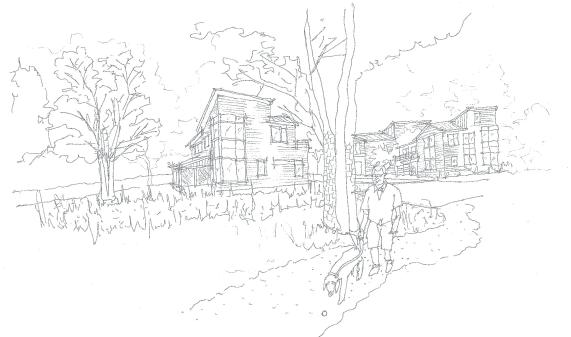
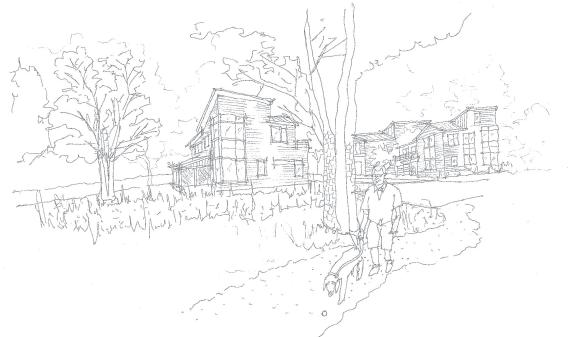
Hanover County residents the first Sunday of every month.
Energy Quest
shrubby palm makes a dramatic specimen or focal point with its bold, evergreen foliage and strong architectural form. One of my favorite ways to use this plant is by mimicking nature and planting dwarf palmetto in large groups under the shade of deciduous trees, where it creates a beautiful and enchanting effect. It can even be used as a low hedge, where it makes a striking backdrop for other plants.
Saturday, May 21, 10 a.m. to 4 p.m. Radiant. Chemical. Nuclear. Mechanical. Motion. Gravitational. Thermal. Electrical. Discover different types of energy and how we use them to do things for us – light and heat our homes, bake cakes, freeze water, move cars, play music and more. Visit hands-on science stations to experiment and explore green technologies with local scientists. Last ticket sold at 2:30.
$3 Museum members; $5 nonmembers. Memberships available on event day.
For wildlife, dwarf palmetto’s greatest asset is its evergreen leaves, which provide year round cover for all types for animals. Masses of tiny white flowers blossom on long spikes up to seven feet tall in late spring, attracting a variety of insect pollinators. The flowers are followed in summer by green pea sized fruit that ripen and turn black in late summer and fall and serve as a valuable food source for migrating birds.
found,


and special to our small corner of the world.
Alistair
area at: www. growingwildnursery.net.
your ecological house™ Sustainable Forestry—Ancient Oaks and Green Homes
by Skip WenzWhile he was touring England, a friend of mine visited a famous university with a dining hall that was built in the late Middle Ages. Peeking into the building, he observed workmen hoisting an enormous wooden beam toward the high, vaulted ceiling.
He asked if the roof was being repaired, but was told that it was not. The workmen were simply replacing the old oak support beams as a matter of preventive maintenance, in case undetected wood worms had attacked them and dangerously weakened the structure. “We replace them every 400 years or so, just to play safe,” a workman said.
The workman went on to explain that while the cost in today’s currency of the huge replacement beams could make such work prohibitively expensive, that was not a problem for the university because it had its own woods—a small oak forest that it maintained for the provision of high-quality timber for structural repair and the replacement of paneling, bookcases and so on.
Each oak in the forest was planted and shaped by pruning to meet a specific need, and measurements of the trees’ growth were recorded and passed down from generation to generation. Today’s
replacement beams were planted about 500 years ago, and their replacements, to be installed about AD 2,400, were planted a century ago.
It’s hard to imagine a better example of sustainable forest management and building maintenance: careful, multi-generational planning; an ongoing commitment to use renewable resources; respect for the institution’s history—it’s all there.
But it’s also true that such exemplary management is practiced in a very limited setting, where the resources are carefully controlled, the intent is applauded and the financial incentives are built-in. What lessons can ordinary builders and homeowners take from this cultivation of ancient oaks?
The university groundskeepers who planted the dining hall’s replacement beams five centuries ago knew that wood had been used in construction from time immemorial, and believed that it always would be. Their investment in the future felt secure because they had faith that succeeding generations would continue their practice of developing this renewable resource.
As it turned out, they were investing in a self-fulfilling prophecy. As each succeeding generation saw the benefits of sustainable forestry when the university’s trees were harvested and put to use, it also saw the need to plant new trees.
The fact that the world’s future supply of affordable, high-quality wood is seriously threatened can cause us to feel hopeless and give up on the future. Alternatively, we can follow the example of the university’s forest managers and invest in our own future and that of generations to come: we can support and promote sustainable forestry practices and, where appropriate, grow our own trees.
Fortunately, it’s relatively simple to support sustainable forestry practices. The Forest Stewardship Council (FSC) sets standards for and licenses and monitors participating forest industries worldwide. FSC works with small and large companies,
and its standards ensure high conservation values and promote biodiversity, integrated pest and disease management and socially beneficial forestry.
FSC-certified products are available in most parts of the U.S., and although they cost a little more than ordinary forest products, there is no “greener” way to spend your project dollars.
If you think you’ll own your property for a few decades, planting hardwood trees could be one of the best investments you can make for you and your heirs.
Today, one large slab (slice) from a mature walnut tree can sell for $500 to $1,000. The trunk alone can yield a dozen such slabs, and the rest of the tree can be sold for paneling, veneer and furniture making.
As your tree grows, it will act as a carbon sink, provide shade, shelter and walnuts, and make a home for birds. (The walnut is just one of many valuable hardwood trees. Check with your local Extension Service to determine the right trees for your property.)
There is no guarantee that growing trees and promoting sustainable forestry will ensure that future generations have adequate supplies of wood—that’s up to them. But at least you can feel good about showing a little faith in the future at your ecological house.
© Philip S. Wenz, 2011 Philip S. (Skip) Wenz is a freelance writer specializing in ecological design issues. He was a general contractor, residential designer, teacher and writer in the San Francisco Bay Area. In the early 1990s he founded, and for ten years directed, the Ecological Design Program at the San Francisco Institute of Architecture. He also teaches “Creating Your Ecological House,” at Berkeley’s Building Education Center and wrote the book, Adding to a House (Taunton Press, 1995). Skip now lives with his wife, Pam, in Corvallis, Oregon and divides his time between various writing projects and retrofitting his older home to be more environmentally friendly. He may be reached by email through his Web site at www.your-ecological-house.com.
urban trees
City of Wilmington 2011 Tree Awards
Every April the City of Wilmington Tree Commission presents awards recognizing outstanding tree preservation, outstanding landscapes and outstanding commitment to tree maintenance. At an awards ceremony held in April, the Commission recognized three properties in four categories (UNCW won awards in two categories).
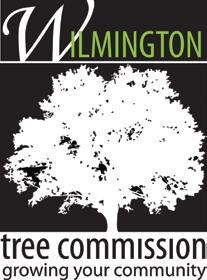
The City of Wilmington Tree Commission acknowledges these award winners for their outstanding commitment to preserving the ecological health and enhancing the beauty of Wilmington. Wilmington trees can be nominated in any of nine categories from November through February of each year. Details on the this and other programs of the Wilmington Tree Commission can be found on the City of Wilmington website: www. www.wilmingtonnc.gov.
2011 Tree Award Winners
Outstanding Tree Preservation
1716 Chestnut St.
Owner: Dorothy Rankin & Lee Lowrimore
Site Designer/Arborist: David Donahue
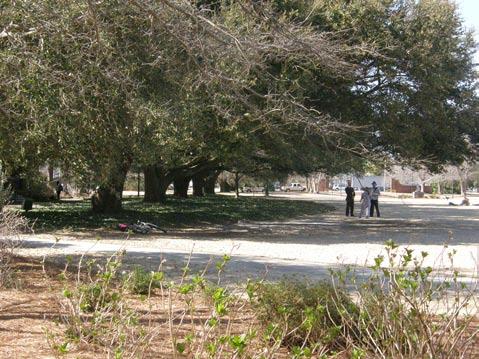
Landscape Architect: Native Landscapers
Outstanding Functional Design
Lumina Station II
Owner: Lumina Station, LLC
Landscape Architect: Donna Clemmons
Lumina Station II was designed around a variety of unique land development challenges including being a former landfill. Storm water runoff is directed to a retention pond that is a focal point with pedestrian bridges & landscaping that incorporates existing Live Oaks, Red Maples, Magnolias as well as water tolerant Birch trees & Weeping Willows. Visitors and tenants are drawn to porchways overlooking the water where they can enjoy a local beaver, several snack-begging turtles and the occasional heron.
This live oak on Chestnut Street was a main consideration when re-designing the property entrance. Site design focused on reworking an angled walkway to allow the live oak’s low branch to remain intact, arching over the sidewalk. The design complements the tree with an architectural statue, shade-tolerant plants and low maintenance selections.
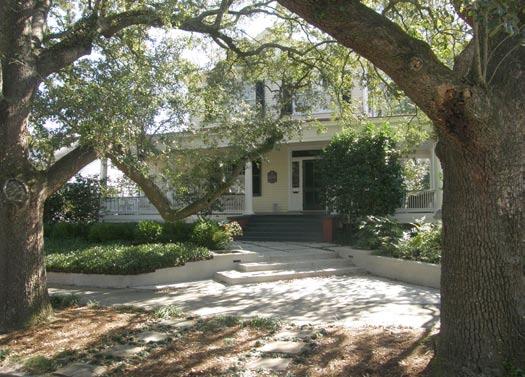
Located in the center of UNCW’s three original campus buildings are 18 Southern Live Oaks planted as small seedlings in 1960. These trees create the perfect frame for campus-related activities such as graduation as well as a regular filming location for One Tree Hill. The Live Oak Allee with its beautiful wide-spread crowns is an inspiring sight, with abundant cover and food source for local wildlife.
Site Designer: Wrightsville Beach Landscaping
Outstanding Use of Native Trees
Design/Style Appropriate to History & Significance of Site
UNCW Campus Quadrangle
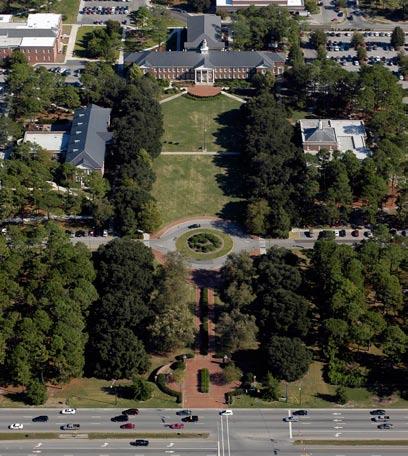
(Historic Core)
Site Design & Landscaping: UNCW Landscape Services

Arborist: Karen Tobiassen
Superintendent: Robert Warren
The remarkable girth of the oak trees in UNCW’s Live Oak Allee can be credited to the efforts of an early caretaker, who for decades applied chicken manure as fertilizer. Oak trees of this age would normally measure two or two and a half feet in diameter, while these measure four feet across.
community news
It Starts With Me
It started…well, with her. Danielle Richardet, a Wrightsville Beach mother of three, decided she had to do something. She and her husband Aaron, like many parents, hope to leave their children a better world. And wanted to teach them they can have an effect on their environment. They loved their walks on the beach, but the amount of trash there seemed endless. Inspired by “The Daily Ocean,” a blog authored by Sara Bayles who picks litter off Santa Monica beaches in 20-minute increments, chronicling what she collects and posting the results online, Richardet began taking her three young children out for their own 20-minute forays. They select a different beach
access each trip and fan out, pails in hand, to pick up the debris others have left behind.
One glaring difference from the California project? The cigarette debris—almost nonexistent in Santa Monica, where smoking on the beach is banned. “Cigarette litter on our local beaches is a nightmare,” says Richardet, noting cigarette butts comprise 40% of the litter that washes up on local beaches, creating not only unsightly litter but releasing toxins into the environment and choking wildlife. Although she and her family pick up all the litter they find on their trips, they have begun logging the high numbers of cigarette butts they find. As of this week, the count stood at 16,627. Richardet is
We’re Looking for a Few Good Leaders to Explore, Enjoy and Protect the Planet

On Day 58, April 23, 2011, this is the 15 lbs 13.6 oz of litter collected. It includes 335 cigarette butts, 23 caps or lids, 22 straws, 11 plastic bottles, 4 zip lock bags, 4 plastic spoons, 5 pairs of shoes, and sand toys. (All shoes and clothes Richardet removes from the beach are donated, and recyclables recycled.)

encouraging local officials to consider a smoking ban on the beaches; lacking that, she says education, signage and proper receptacles could help cut down on the cigarette litter.
Richardet’s idea was selected as a winner by the Brita FilterForGood Film Project. Award-winning filmmaker Destin Cretton created a short film about the project,
Cape Fear Group of the Sierra Club

For the Greater Wilmington Area
We need to protect the environment…for our future through
• Development of environmental and conservation programs
• Addressing issues such as Titan Cement and Offshore Wind
• Endorsement of political candidates
• Outings and special events for members and the community
The NC Sierra Club is looking for leaders who can bring A variety of skills and backgrounds to Develop and grow our group
• An ability to work cooperatively with others as part of a team
• The experience or perspective needed for the team to accomplish its work
• A willingness to commit the time needed to participate in the work of the leadership team
• An ability to follow through on commitments
For more information contact NC Sierra Club Chapter Chair Ginny Kloepfer at vkloepfer@suddenlink.net
which premiered at January’s Sundance Film Festival and will air on the Sundance Channel through June.
Has gaining a national audience changed Richardet? Her blog chronicles the ups and downs—some days kindred spirits find her via the internet and the Brita award, and a small enthusiastic team combs the beach. Other days it’s just her and her kids. But Richardet’s tone remains optimistic. She now encourages beachside restaurants to be more mindful of single-use items, drink cups and straws in particular. She prints up fact sheets and talks to the managers, posting links to encourage plastic bag bans. Most days you can still find her, twenty minutes at a time, sifting through the sand to pick up what others have left behind.
At Richardet’s blog, entitled “It Starts With Me,” you can follow her adventures in saving the planet.
http://itstartswithme-danielle.blogspot.com/

Earth Day 2011
Pender County Festival
Poplar Grove Plantation
Saturday April 30 10am - 3pm
Come to Poplar Grove for our Second Annual celebration of renewable and sustainable resources! The Pender Earth Day Festival focuses on local businesses and local community participation.
www. Penderearthday.org penderearthday@gmail.com
910-233-8594
See Page 12 for Program
Our area offers two celebrations this year, on Saturday, April 30. The times are staggered, so if you want to do it all, you can start your festivities at Poplar Grove and wind up at Hugh MacRae.
Earth Day was created in 1970 to promote environmental awareness and to encourage progressive action around the world. It is officially celebrated every year on April 22, although individual communities around the world and in our region host celebrations throughout the month of April. These festivals are just one way we celebrate the Earth and renew our commitment to building to a greener, healthier, more sustainable planet.
Ocean Cure’s 90 Days to Earth Day
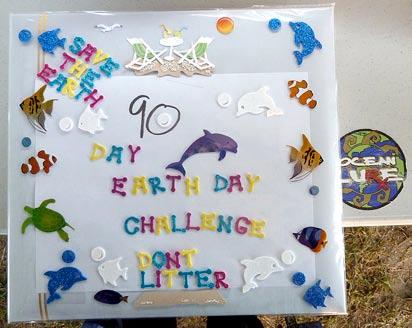
Elementary school teacher and surf instructor Kevin Murphy has a powerful belief in our ocean’s ability to help heal people. Along with his love of the ocean comes a desire to preserve our environment. In this spirit, three years ago he pioneered an environmental movement called “90 Days to Earth Day,” which challenges students in grades K-12 to collect
Wilmington Earth Day Festival
Hugh MacRae Park
Saturday April 30 12pm - 6pm
Come to Hugh MacRae Park for Wilmington’s annual Earth Day Celebrations and learn how you can help “Clear the Air” in our community.
www. WilmingtonEarthDay.com wilmingtonearthday@gmail.com 910-798-4452

See Page 13 for Program

as much trash as they can from January 22 through April 22. “This fosters a desire for children to get outside and make a positive impact on the environment,” says Murphy. “I believe in conservation, activism, and education when it comes to saving our fragile environment.”
On Earth Day 2011, April 22, Clean Energy Events and Mellow Mushroom helped sponsor an event to celebrate the conclusion of this year’s trash collection competition. Sixteen-year-old Megan Durns was the winner for a third year. Her prize? An eco-friendly surfboard made by Scott Taylor of pawlonia wood, finished without the use of traditional fiberglass. And the satisfaction of know she’s making a difference.
Learn more about Ocean Cure, the non-profit dedicated to providing surf camps to medically fragile and at-risk youth, at www.oceancureinc.org. See also www.cleanenergyevents.org and www. facebook.com/engrainsurfboards.

Pender County Earth Day Festival April 30, 2011
Pender County’s 2nd Annual Earth Day Festival 2011 is being held at Poplar Grove Plantation, on route 17 just north of Wilmington. There will be vendors, exhibits, music, a beer/wine tent and children’s activities. This event will be free to the public.
Our festival celebrates our local businesses, products, services and ways of living that help better care for our natural resources. Pender Earth Day Festival is proud to be an all-female committee composed of Pender business owners, organization and community leaders.
The Pender Earth Day Festival focuses on local community participation in all areas from the Pender High School , JROTC Opening Ceremony, Scout troops for litter sweep in the Abbey Nature Preserve, Pender student volunteers for face painting, t-shirt sales and Do-it-Yourself Tie Dye Center, and student bands for entertainment!
We have FREE EVENT PARKING, environmentally friendly and local vendors, music that includes: “Lisa and Galen, Award Winning Jazz Duo” and Stump Sound Ramblers, The Doug McFarland One, healthy lunch by Quartermaster’s Restaurant, snack vendors including Kona Ice, Kid’s Eco-Zone, bounce houses by The Party Hoppers, art, chair massage, Mother Earth Beer and our very own Pender County Bannerman Wine.
Our committee represents local businesses, organizations and government entities: Core Focus Pilates and Physical Therapy, Dolphin After-School Enrichment Program, Quartermaster’s Restaurant, Pender County Parks and Recreation, Pender County Soil & Water Conservation, and Town of Surf City Parks and Recreation.
Pender County Earth Day Festival Committee
penderearthday@gmail.com
910-233-8594 or 910-297-1346
Facebook: “Pender Earth Day”

www.PenderEarthDay.org
MUSIC STAGE
• 10 am – Color Guard Ceremony by Pender High School JROTC
• 10:15-11:15 – Pender County Student Musicians by Galen Hunsucker instructor
• 11:15-12:30 – Lisa and Galen “International Jazz Duo “
• 12:30-1:30 – The Doug McFarland One
• 1:30-3pm – The Stump Sound Ramblers
TALKS IN THE BARN
• 11 am – “Controlling & Preventing Stormwater Runoff in your Yard” by the NC Coastal Federation
• 11:30 am –“ Natural Gardening “by the Pender County Master Gardeners
• 12 pm – Pender Watch
• 12:30 pm – Pender Soil & Water
• 1 pm – Walking Meditation
ACTIVITIES
• Do-it-Yourself Tie Dye Center
• Walking Meditation: 1pm “Healing SelfHealing Earth”
• Raffle Drawings All Day
Raffle Grand Prize: Kayak
• Hourly door prizes
KID’S ECO-ZONE
Face Painting
Arts & Crafts
Bounce Houses
FOOD VENDORS
Island Snow Concessions
Kona Ice
Luna Pops
Quartermaster’s Restaurant
BEER & WINE TENT
Bannerman Winery
Wolfman Beer
Mother Earth Beer
GOLDEN GLOBE SPONSORS
Dolphin After-School Enrichment Program
www.dolphinaquaticsandfitness.com
Herring’s Outdoor Sports
www.herringsoutdoorsports.com
Kona Ice of Coastal Carolina, LLC
www.kona-ice-cc.com
NC Big Sweep of Pender County
www.ncbigsweep.org
Pender County Parks & Recreation
www.pendercountync.gov

Quartermaster’s Restaurant
www.quartermasters.squarespace.com
The Party Hoppers
www.thepartyhoppers.com
ThreadFx
www.tfxemb.com
VENDORS
Coastal Eco-Leisure & Buck Stove
Core Focus Pilates
Emily’s Treasures
Go Girl Green
Going Green Publications
Hampstead Trash & Recycling
Inis Spa
Island Girl Glass
Janet Nestor: Author of Pathways to Wholeness: A Mindfulness Guide Book
Jones-Onslow EMC
Kathy/Alana Leonard
Mid-Atlantic Great Dane Rescue League
Nature’s Select
Nature’s Way
NC Big Sweep-Pender County
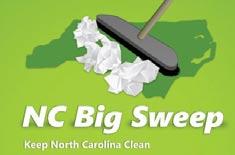
NC Coastal Federation
Pender County Master Gardeners
Pender Watch Conservancy
Precise Lawn
Rare & Different Tunes
Sand & Sea Treasure
Southeastern Energy Corp
Too Many Purses
Wilmington
Earth Day Festival April 30, 2011
Music & Live Entertainment
Multiple bands will be featured throughout the day, including a headliner. All entertainment is FREE to the public!
12:00p Mike Blair and the Stonewalls
1:30p Raphael Namé (Brazilian Music)
2:00p Ilad
3:30p The Tree Guy (Mark Herbert)
4:00p Rayland Baxter
Food & Beverage
Wilmington’s Earth Day celebration is a family-friendly event designed to encourage children to become more aware of our planet. This year’s festival features live entertainment, local and organic foods, and a kid’s “Eco-zone” tent area with takehome craft opportunities.
Although their main focus is the annual Earth Day celebration, the Wilmington Earth Day Alliance works throughout the year to raise awareness about environmental issues within the Wilmington community. With this year’s theme, “Clear the Air,” organizers hope to focus attention on how air pollution standards will affect the quality of life for all. (See box for details.)
FREE Shuttle Service... USE IT!
Due to the extremely limited parking, you are encouraged to utilize a satellite parking area. To accommodate the assumed 5,000+ Festival attendees, the Earth Day Alliance has arranged FREE shuttle service (sponsored by WAVE Transit). The FREE trolley service to the satellite parking is available from 11:306:30 at the Cinema 6 parking lot next to Tidal Creek.
WAVE Transit will also have one of their new hybrid buses on display during the event for people to see.
Food, beer and other beverages are available for purchase, including organic selections produced locally in and around the greater Wilmington area. Among the great selections are offerings from these area favorites:
• Empire Distributing
• Fat Tire Beer
• Luna Pops
• Mellow Mushroom
• ONEHOPE Wine
• RH Jeffries
• Rita’s Italian Ice
• Tidal Creek Coop Cooperative Market
Kids’ EcoZone Area
Pet Policy
Please be aware that the County Parks do not allow dogs at this event, as food is being served.
More About Our Theme
The Wilmington Earth Day Alliance chose “Clear the Air” as this year’s Earth Day theme to help bring attention to air quality in the area. Many residents enjoy blue skies and sunny days at the beach, yet increased pressure on our air quality is making it likely the area may soon be downgraded.
The Clean Air Act and Amendments of 1990 determine air quality standards, and require the EPA to set standards for six common air pollutants. The EPA revised these in June of 2010; under the new sulfur dioxide guidelines, the New Hanover area may be in danger of being designated a “nonattainment area,” the first in the state to receive such a label. A nonattainment area is one where air pollution levels persistently exceed EPA standards or that contribute to poor air quality in a neighboring area.
There are many sources of sulfur dioxide, but the primary culprit is burning coal—in our area, to produce electricity. Progress Energy’s coal-fired Sutton Power plant is scheduled to be replaced by a natural gas-fired plant in 2014.
In July of 2011 the EPA Is considering lowering admissible levels for primary ozone. The major sources of ground level ozone are motor vehicle exhaust and industrial emissions. Learn more about air quality and how you can affect it by visiting:

http://www.epa.gov/ttn/naaqs/ EPA website
http://daq.state.nc.us/ NC Department of Air Quality
http://nccoast.org/index.asp NC Coastal Federation
Exhibitors
The Ability Garden
Airlie Gardens
Cape Fear Community College Sustainability Technologies Program

Cape Fear’s Going Green
Cape Fear Green Building Alliance
Cape Fear Public Utility Authority
Community Compliance
Cape Fear River Watch
The Cape Fear Volunteer Center
Carolina Green Building
City of Wilmington Stormwater Services
Clean Air Lawn Care
Clean Energy Events
Coastal Carolina/ Wilmington Electric Automobile Association
DAK Americas, LLC
Ecocential Energy, LLC
Falun Dafa
FARM (Farm Animal Rights Movement)
The Full Belly Project
Green Baby Diaper Service
Green Brand Sportswear
Humanists & Freethinkers of Cape Fear
Keep America Beautiful of New Hanover County
Kids Making It
Lovey’s Natural Foods and Café
Luna Pops
Muddy Muse Pottery
The Nature Conservancy
NC Coastal Federation
NC Coastal Reserve and National Estuarine Research Reserve
NC GreenPower
NC Oyster Shell Recycling Program (DMF)
NH Soil and Water Conservation District
Oceana
Rita’s Italian Ice
Shaklee Independent Distributor
Sierra Club (Cape Fear Group)
Signature Solar
SouthEastern Cedar Oil Industries
Stewardship Development Award Program
Stop Titan Action Network
Tidal Creek Cooperative Food Market
UNCW Department of Environmental Studies
WaveCrest Mattress Recycling
Wave Transit
WB Surf Camp
West Pender Rail Trail Alliance
Wilmington Cartmen
Wilmington Yoga Center
Wrightsville Beach Sea Turtle Project
nature events
NC Native Plant Society Events



Orchid Walk at Green Swamp with David McAdoo
Saturday, May 21, 2011
(9
-
The SE Coast Chapter of the NC Native Plant Society and the Triangle Orchid Society will host a walk with orchid expert, David McAdoo. We will visit Green Swamp and nearby areas.
Meet at 8:45 am at the Hardee’s in Supply (corner of Hwy 211 & US 17). The field trip begins at 9 a.m. and includes Green Swamp and nearby areas. We will end around 4 p.m. We’ll be within sight of highways so anyone wishing to leave earlier can do so easily.
Please bring insect repellent, hat, good hiking boots, suncream, water, snack and lunch. Be prepared for hot, muggy weather. Ticks and chiggers are as plentiful as the flowers!
Expect to see the following orchids in bloom: Bearded Grass Pink (Calopogon barbatus), Pale Grass Pink (Calopogon pallidus), Grass Pink (Calopogon tuberosus & maybe some var. alba), Small Spreading Pogonia (Cleistes bifaria), Spreading Pogonia (Cleistes divaricata), Rose Pogonia (Pogonia ophioglossoides) and Grassleaf Ladies’ Tresses (Spiranthes praecox).
Be

Life in Trolldom
Additionally, there will be an opportunity to see plants of Epidendrum magnoliae (used to be E. conopseum). This is the only epiphytic (non-terrestrial) orchid in North America that grows outside of Florida. North Carolina is the northern limit of its range. B.W. Wells Savannah Walk
Field Trip to B.W. Savannah Sunday, June 12, 2011
Dr. John Taggart, Assistant Professor of Environmental Studies at UNCW, will
lead a morning field trip to B. W. Savannah. This is the culminating activity for his Introduction to Plant Identification classes and will focus on identifying native plants. You do not need to have taken the class to join us. The Savannah is noted for orchids such as Pale Grass-Pink (Calopogon pallidus) and Rosebud Orchid (Cleistes divaricata), carnivorous plants and interesting grasses. Details to be announced.
For more information on NC Native Plant Society events, or to view photos of past plant walks, visit http://www.ncwildflower.org/index.php/chapters/secoast/. Sign up for events or learn more by emailing Cary Paynter at cary@ncwildflower.org.
Summer Camp at Cape Fear Museum
Beginning June 14
Summer Shorts: Eco Adventures

Tuesdays, Wednesdays & Fridays in June
Investigate the creatures and ecosystems of the Lower Cape Fear. Examine different types of animal furs, play a habitat survival game, and create a Venus’ flytrap model to take home.
Eco Adventures is a one-hour handson adventure for groups of 10 or more children and their adult chaperones. Appropriate for children ages 5 to 14. Fee charged. Pre-registration required. To register, call (910)798.4362.
nature
Wild Bird & Garden Nature Photo Contest
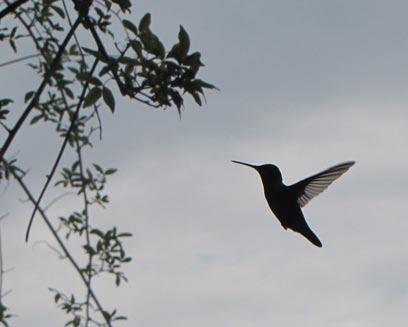
There were twenty-one adult entries and four kid entries in the First Annual Nature Photo Contest sponsored by Wild Bird & Garden. Entries were displayed in the store so the public could vote for their favorites; photos were also judged by local photographers Chuck Carmack, Mark Jones and Garold Carlisle.
Katharine Frazier won both the popular vote and the judges’ vote for the kids category. She is very interested in birds, attends bird walks at Airlie Gardens, and did a science project last year on birds and their diets in relation to beak size.
All first-place winners received a 20pound bag of bird seed. Adults received a gift certificate to Wild Bird & Garden; the Kids prize included a gift certificate to Learning Express.
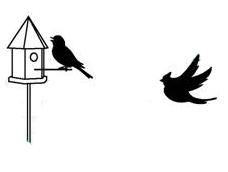

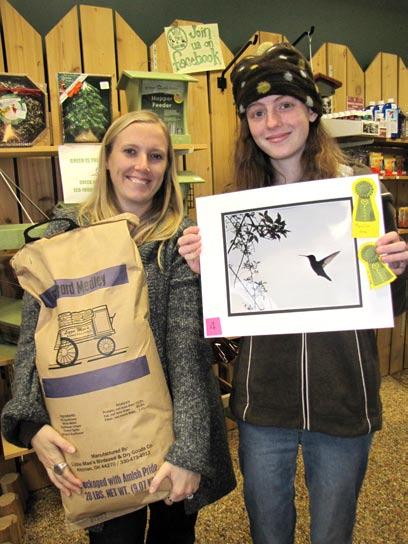
Thank you to the judges as well as all of those who entered and who voted.
& arden
Hummingbird - Katharine Frazier
1st Place & Popular Vote Kids Category
Type of Camera Used: Canon SX10 IS
This past summer I was sitting outside on our back porch, just watching the birds. I heard the little hum and chip of a hummingbird nearby, so I got the camera ready. This little guy appeared and I just started taking tons of pictures, hoping some would turn out. This looks like a black & white picture, but it’s not - the light allowed me to catch the silhouette of the hummingbird pretty well. I love how you can see the detail of the feathers on the wing!
Eastern Bluebird Workshop
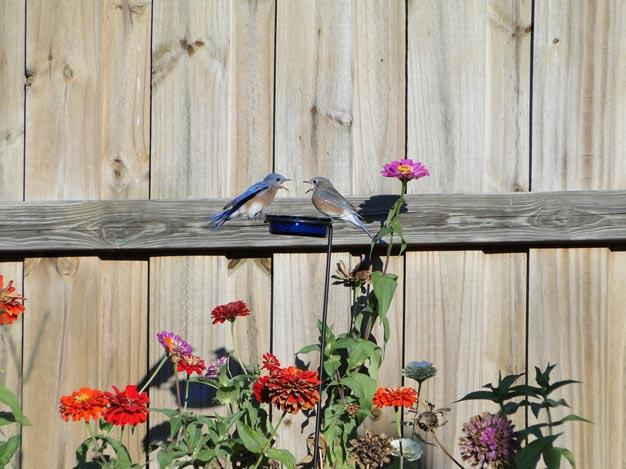
Sat., May 22: Painted WorkshopBunting
Bluebirds Talking - Stacey Burrell
1st Place Popular Vote - Adults
The picture was taken in my own backyard on September 19, 2010 at the 6 pm feeding. I used a Sony DSC-HX1 Cyber-shot that I am still learning how to use. My photography experience ended after taking a class in high school. After about 25 years, I got interested in growing plants that attracted butterflies to take pictures of them. Then, after a conversation with a co-worker telling me how her husband set out meal worms to attract bluebirds to their property, I thought I might give it a try.
After a few pointers from Jill at Wild Bird and Garden, she fixed me up with worm cup, stand, and live meal worms and told me to be patient— they would find it in a couple of weeks. About two weeks later, I had bluebirds visiting, playing, eating, bathing and posing for pictures in my backyard, and have had them ever since.
Saturday,Workshop
Start getting ready for the 2nd Annual Nature Photo Contest, coming in Fall 2011!
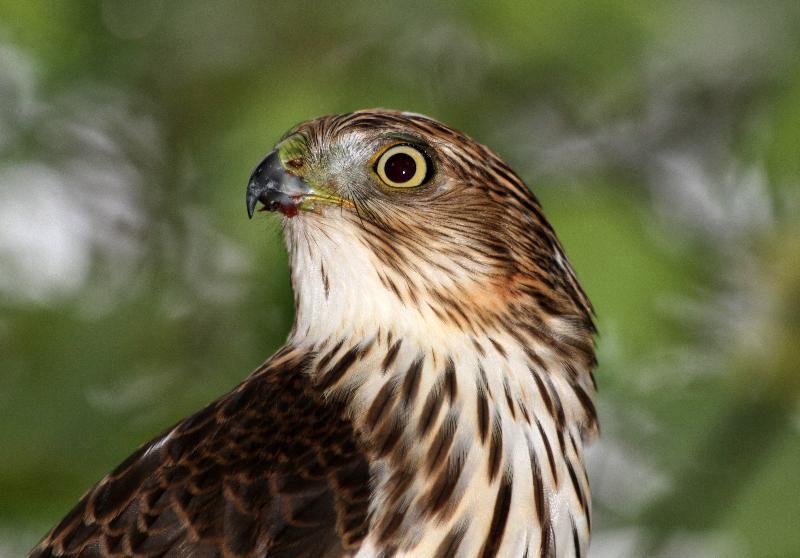
Saturday, April 9, 2011
9:15-10:30 am
9:15-10:30 a.m. Native Plant Sale 2:30–4:30
Imagine the Possibilities in Your Backyard
Cooper’s Hawk - Jo Wilkins
1st Place judge’s Vote – Adults
Thank you for allowing me to enter the photo contest. After being encouraged by my friends and family, I gathered up enough courage to enter. What a surprise to hear that I had won.
andy wood—the naturalist’s corner
Complex questions, one simple answer: we need to pick up after ourselves
by Andy Woodsmoke cigarettes. He blew a bit of smoke into the jar, closed it up and we watched in rapt interest as the larvae quickly died. My brother, now a curator with a New England historic museum, recently told me that he sometimes finds bits of tobacco inside pockets and between layers of old fabric artifacts. In the 18th century, tobacco was placed in folded fabrics during storage as a deterrent to moths and other fabric-eating insects. “Not as sweet as lavender, but does the job good as cedar,” he says.
that nicotine is poisonous to wildlife, and to humans. We know from recent studies of used cigarette filters in water that filter contents are harmful to ecosystem health, beginning near the bottom of the food pyramid, upon which higher life forms depend.
nesting material chosen by the chickadee, which includes a layer of moss covered by shredded cigarette filters.
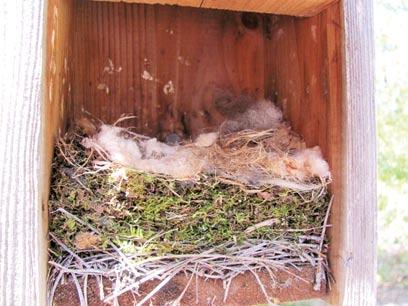
The above picture reveals a Carolina Chickadee (Poecile carolinensis) nest in a rural part of Pender County, where one would expect to see few cigarette filters. And yet, the nest includes frayed filters (far right front), along with bits of fibrous insulation, fresh moss, pine straw, mammal hair and other natural materials. This mixture of anthropogenic (human origin) and nature’s materials is common with chickadee nests. However, after witnessing several chickadee nest failures over the past several years, I have begun wondering if there is a connection between chickadee nestling survival and the presence of cigarette filters; owing to the fact that used filters contain large amounts of nicotine, a toxic compound with a long history as an effective insect and mite pesticide.
I’ve long been interested in nicotine as a pesticide, probably because my father conducted research in the late 1950s to prove spider mites develop resistance to nicotine at the genetic level.
I recall as a kid, an experiment one of my brothers conducted on mosquito larvae in a jar of water. It was a simple demonstration to show why I should not
Visit http://itstartswithme-danielle. blogspot.com to see how local resident Danielle Richardet is making a difference every day by cleaning up area beaches just 20 minutes at a time. To date she and her family have picked up 16,627discarded cigarette butts. See also page 10.
Nicotine as an effective poison prompted an aquatic scientist in the 1990s to examine the potential biohazard of used cigarette filters in freshwater ecosystems. The research involved placing used cigarette butts in different volumes of water containing live Daphnia, Crustaceans related to shrimp and lobsters. The study found that, when soaked in two gallons of water, enough nicotine and other toxins leached out of one used cigarette filter to kill Daphnia outright. Because small fishes and other aquatic animals depend on Daphnia for food, this easily replicated study proves that improperly discarded cigarette filters pose a threat to ecosystem health.
Getting back to the chickadee nest containing used cigarette filters, I wonder if there is a connection between the presence of used filters and resulting egg and nestling mortality. I have seen nestling chickadees fledge in seeming good health despite having been raised in a nest with used cigarettes, but I have also found chickadee nests with a full clutch of dead eggs nestled in a fluffy cup of shredded cigarette filters. So this is an issue that clearly needs more investigating.
There may even be a selective advantage for chickadees living with cigarette filters: if the nicotine acts as a pesticide to bird lice, mites and ticks without killing the chicks or parents, their overall health may be enhanced, but there is likely a fine line between “the treatment being worse than the ailment.”
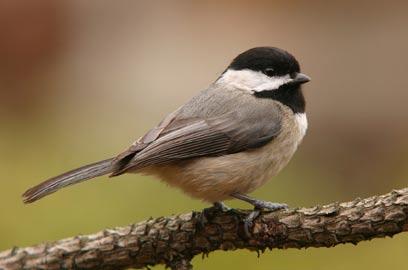
The scientific process is essential to help answer such complex questions. We know from centuries of use as a pesticide
The first Earth Day, celebrated in 1970, drew attention to air and water pollution, endangered species, and litter. These issues are still with us. With the expansion of plastics as a replacement for paper and glass containers, the lifespan of today’s litter far outlasts the people who generate it. Cigarette filters may seem inconsequential until you consider some 360 billion cigarettes are smoked in this country each year. Over five trillion cigarettes are smoked worldwide. Today, cigarette filters are the most common item collected during organized beach cleanups.
Discarded cigarette filters may seem a trivial subject for discussion in light of our other global challenges—including climate change, energy issues, water shortage, wars and social unrest. But there are many acts each one of us can perform daily to help improve our global condition. Paying attention to the little things, like improperly discarded cigarette filters, can help us ensure we are not overloading our planet. Andy Wood is Education Director of Audubon North Carolina, and is author of Backyard Carolina.
Proceeds from the book support his work to protect two critically endangered species of freshwater snails, both endemic to southeast North Carolina. His commentaries can be heard every other Monday on WHQR 91.3FM.
eco-friendly art
Portrait of an Artist: Charlie Rawls
 by Mitzy Jonkheer
by Mitzy Jonkheer
I collect birdhouses. I have one on every fence pole in my yard. So when a friend told me about Charlie and his unique birdhouses, I contacted him, eager to see his work. He brought a collection of his newest designs over to my studio and I was pleased to see that they were constructed from reclaimed lumber with roofs made from the rusty metal of old sheds.
People come to green living in all sorts of ways. For some it’s a conscious choice; for Charlie Rawls it was more a rambling evolution of choices. Charlie retired in 2008 from twenty years in the logging business and settled in the country,
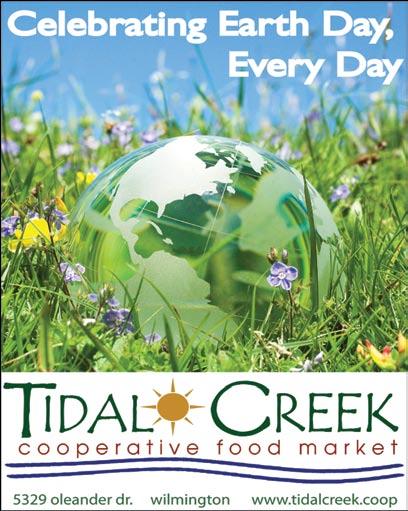

converting the old tobacco shed out back to a workshop.
His journey from logger to recyclist began when he started building simple houses to attract birds to his yard, carefully researching what different birds prefer, and building to suit. Around that time, a friend was tearing down an old barn and offered to give Charlie the wood if he would help. These materials were free and Charlie liked the rustic look they added to his creations. Soon, neighbors and friends were asking Charlie for his houses, and so began his business.
I gave Charley an old board from a red barn. He made it into a lovely birdhouse with a tin roof.
You can find “Charlie’s Birdhouses” Wednesdays at the Poplar Grove Farmers

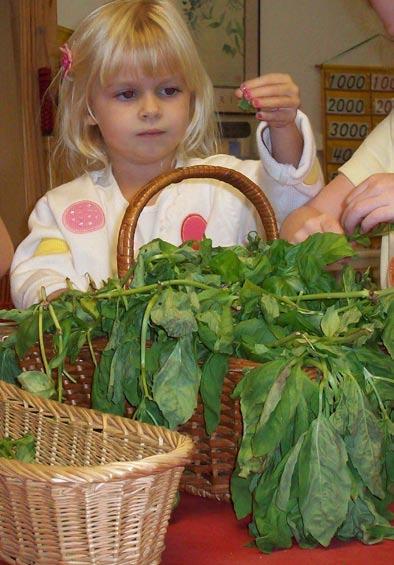
Market 8am-1pm, and at local fairs around town on weekends. Look for Charlie and his lovely wife, Renée. Or give him a call at (910)640-7538. He builds houses for birds, butterflies and bats, and takes custom orders.

Mitzy Jonkheer is a local artist and metalsmith. Born in Wilmington, raised on the Cape Fear, her studio is located between the two at 4410 Wrightsville Avenue.
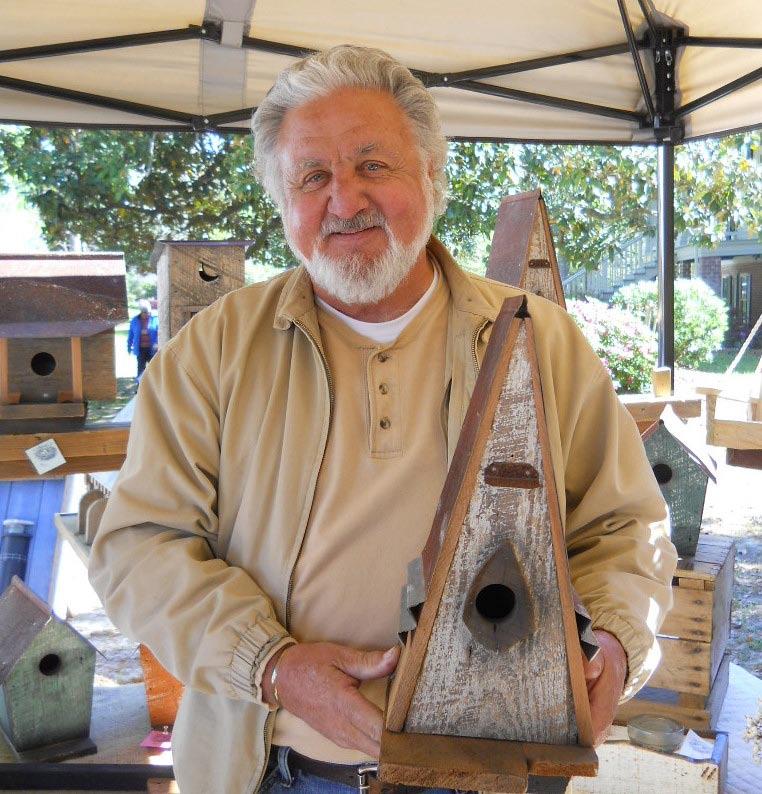
food & business news

Brooklyn GreenSpace: New Urban Container Garden
April 17 marked the kick-off of downtown Wilmington’s first community container garden. The brainchild of Courtney Matheson, Donna Uguccioni and Nina Bays, neighbors hope to unify and beautify the Brooklyn Arts neighborhood through community gardening. All planting is being done in 18-gallon Rubbermaid tote containers, on a donated strip of land between 6th and 7th streets, behind the houses that front Brunswick Street. Visit the GreenSpace page on Facebook to see photos or to sign up for a season.
Birch Creek Community Garden
Residents of Birch Creek have always enjoyed a community garden in the sense of having a common area planted for the enjoyment of all residents of Birch Creek. Now, a resident may also choose to have a plot of their own in a community garden area.
Gardening with Compost Tea

Evan Folds had an article published in Urban Garden Magazine or February 10, 2011. His article, “Breeding Microbes with Compost Tea,” explains how we can use beneficial biology by breeding microbes and deploying them to work in our gardens. The article is available at http://urbangardenmagazine.com/2011/02/breeding-microbes-with-compost-tea/.
CFCC Designs Solar Ovens
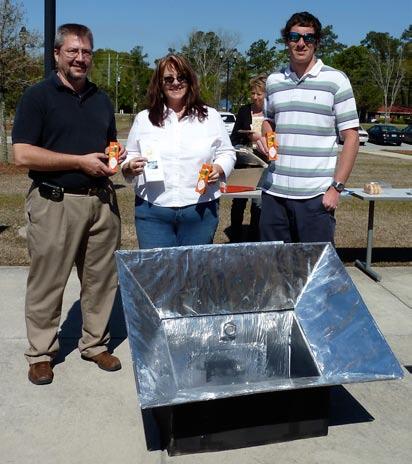
Members of the Issues in Sustainability Technologies class at Cape Fear Community College have been working on solar ovens in conjunction with Paul Wilkes’ Ministry Home of Hope in India. The class was divided into four teams, and challenged to design a solar oven that could be made by Indian women, at little or no cost, from materials that are readily available to them. The resulting ovens were put through their paces in a solar oven competition at the north campus on April 7, 2011.
Alexander
and Chris Rooney created the winning entry in the Solar Cooker contest. Students in Cape Fear Community College’s Issues in Sustainability class, they were challenged to design and build a cooking device that could be made by women in India, and that would be effective in cooking food using only the power of the sun. Paul Wilkes, whose Hope of India project inspired the program, was one of three judges.
Avenue and crossing South College Road, the bikeway passes through the
To reach the downtown Wilmington
Beach and back on May 1 at 8:30 a.m., starting at the foot of Market Street in downtown Wilmington.
Information above provided courtesy of www.rivertoseabikeway.com.
Two Events Celebrating the Bikeway
food & business news
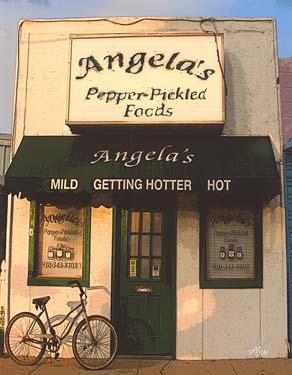

Ann Street Bicycle Boulevard Grand Opening Celebration
Celebrate the opening of the fi rst bicycle boulevard in North Carolina with Mayor Bill Saffo on April 17, 2010 at 10:00 a.m. at the Martin Luther King, Jr. Community Center on So. 8th Street.
River to the Sea Ride
Take part of a free group bicycle ride from downtown Wilmington to Wrightsville Beach and back on May 1 at 8:30 a.m., starting at the foot of Market Street in downtown Wilmington.
trailhead, follow U.S. Highway 74 toward Wilmington; take the Wilmington DOWNTOWN exit. Proceed south on North 3rd Street. Take a right onto Market Street and follow west to Riverfront Park. Parking is available on-street or in the city of Wilmington parking deck located at Market Street and North 2nd Street. The bikeway begins at the foot of Market Street at Water Street. Follow the bicycle Route 1 signs.
To reach the Empie Park parking area, follow U.S. Highway 76 to Independence Boulevard northbound. Take a right onto Park Avenue and an immediate left into the park driveway. The bikeway is on Park Avenue. Follow the bicycle Route 1 signs.
Butterfly
340 Goodman Road, Leland 910-253-5964
Year-Round • M-Sat 8-5
First Farmer Distribution Center in Southeastern N.C. Opened at Historic Burgaw Depot March 22
In collaboration with the University of North Carolina Wilmington and the Town of Burgaw Depot Authority, Feast DownEast celebrated the opening of its Southeastern North Carolina (SENC) FOODS Processing and Distribution Center on March 22 at the Historic Train Depot in Burgaw.
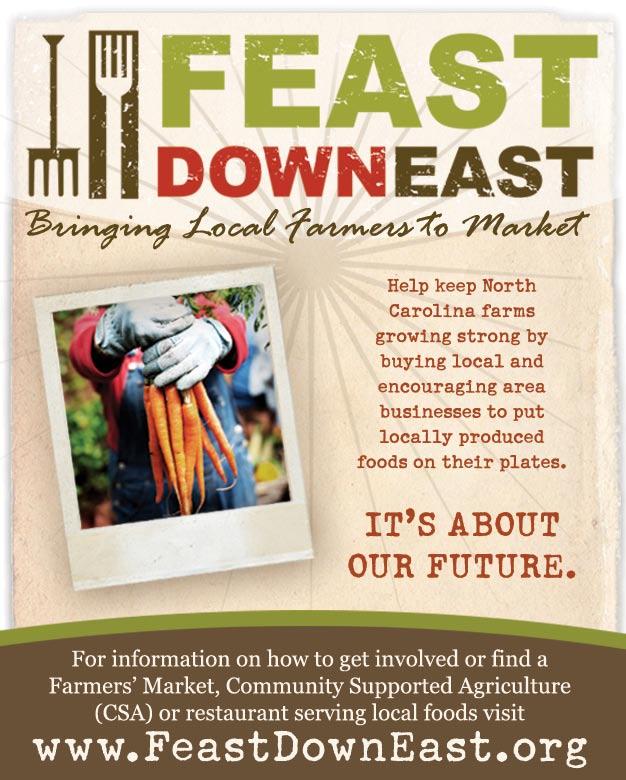
For the first time in Southeastern North Carolina, a food distribution center will help small local farmers remain marketable in a global economy. Funded by the Golden LEAF Foundation and the N.C. Tobacco Trust Fund Commission, the center is designed to encourage and support the local food economy, while preserving the area’s rural cultural and agricultural heritage.
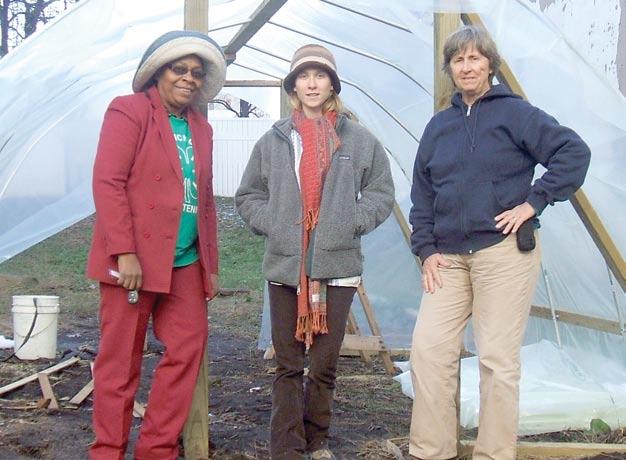
Community members and food businesses alike attended the grand opening celebration, which also marked the launch of the Pender County 10% Campaign, a statewide initiative aimed at keeping $3.5 billion food dollars in N.C.’s economy. (See www. nc10percent.com for details.) New Hanover and Brunswick counties had celebrated their 10% Campaign launches earlier in the week.
As the demand for local fresh food increases, small farmers are challenged to provide the necessary volume of quality produce and delivery options required by area businesses. SENC FOODS, a program of Feast DownEast, plans to pool local farmer products and resources and provide a method of distribution to restaurants, grocers, schools and other institutions in N.C.—making fresh local food more readily available to the region and “bridging the gap” between farmers and consumers.
“We see this partnership as win-win and a great opportunity to help support our mission of building a viable food industry in Pender County,” said Martin Beach, chairman of the Depot Authority.
340
June 10
Year-Round
is the deadline for our Summer 2010 issue
Editor@goinggreenpublications.com or call (910)547-4390
Lovey’s Natural Foods and Café Expands
In response to customer comments that there wasn’t enough room at Lovey’s Natural Foods and Café, this spring, owners Marie Montemurro and Karen Stewart expanded into an additional storefront, quadrupling their floor space. They moved the salad bar, rearranged the layout, and made the aisles a little bigger to make it more shopper friendly.
The counter is bigger; they added another register and you can now pay in the front or the rear of the store. They’ve expanded the hot bar and the cafe menu, added 11 salads to the salad bar, and now have areas to feature gourmet cheese, prepared foods, and a bakery case.
Montemurro says, “We are fortunate that we were able to expand, that we had the need to expand.” Owners and staff alike pride themselves on their customer service, spending as much time as needed to ensure every customer finds just what he or she needs. They take the health
and well-being of their customers seriously, and special order items every week, whether food or supplements, health or beauty items. A monthly gluten-free group meets there some months. Anyone can shop at Lovey’s, but memberships and three different flyer programs allow savings on items purchased.
In spite of all the improvements, some things never change. The salad bar items are still sold by weight. And, adds Montemurro, “We have the best chicken soup in town.”
Lovey’s is located at 1319 Military Cutoff Road, in Wilmington. (910)509-0331.

Progressive Gardens Becomes Drop-Off Location for TERRACYCLE
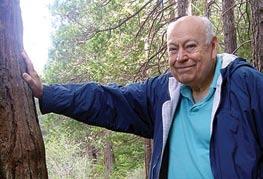
Progressive Gardens is now a drop-off location for the upcycling/recycling ecocompany TerraCycle! TerraCycle turns your once un-recyclable trash into new products, and in doing so will donate $0.02 to a local school for every piece collected. The list of items they accept is very specific, and grows all the time. Below is a sample of the items you can bring in:
• Candy Wrappers - Mars (Skittles, Starburst, M&M’s, Snickers)
• Scotch Tape - Plastic dispensers, roll cores
• Elmer’s Glue- Bottles & glue stick tubes
• Neosporin Tubes
• Huggie’s Brand Diapers- Plastic packaging, wipes boxes
• Lunchables - Plastic holders
The list of acceptable items is growing, and is too long to list here. Call Progressive Gardens at (910)395-1156 or drop in to bring your articles or to see the complete list of items accepted currently. The store is at 6005 Oleander Drive in Wilmington.

“A gripping, fast-paced story”
“I could not put it down”
“Cloaked with mystery”
education & business news
Holistic Dental Center Opens
Tristan W. Hamilton, D.D.S., has opened Port City Dental Center at 4622 Oleander Drive in Wilmington (near Oleander and College Road). The new center uses only mercury-free restoration materials, and offers holistic dentistry and nutritional counseling in addition to a full spectrum of dental services. Learn more at www. portcitysmiles.com, or call (910)399-1127.
Tiny House Listings


Fans of the tiny house movement will enjoy a new website started by tiny house enthusiast Steven Harrell.
Hoping to connect people who recognize the benefits of living in a small home, Harrell started Tinyhouselistings.com for anyone wishing to buy, sell or rent small house properties that are under 1,000 square feet in size.
Harrell lives in a 36' houseboat with his wife Rhiannon and chihuahua “Mako” in Wilmington, NC.
The tiny house movement is being popularized by Jay Shafer, author of The Small House Book. Background and small home plans can be found at www.tumbleweedhouses.com.
Greenfield LakeFest May 21
Cape Fear River Watch will be hosting the 1st Annual Greenfield LakeFest on Saturday, May 21. It will be a fun, familyfriendly, educational event. The event will include land-based eco tours, water-based eco tours, paddle boat races, presentations, various booths focusing on water quality, wildlife (including live reptiles and
other animals), kid’s activities, music and much more.
The goal of the festival is to create awareness of the importance of Greenfield Lake as a historical landmark and an important wetland serving as habitat to a vast array of wildlife, including alligators, and a natural filter of stormwater runoff before it is shed into the Cape Fear River.
There will be no entry fee (just a fee for boat rides and eco-tours). Plans are still in the works, so check the Cape Fear River Watch website (cfrw.us) or Going Green’s online calender of events (www.goinggreenpublications.com) for up-to-date information, or call Cape Fear River Watch at (910)762-5606. Rain date will probably be May 28.
Graduate School News

Bonnie Monteleone has successfully defended her thesis, “The Plastic Ocean Project: An Exploration of Plastic Pollution in the Ocean Subtropical Gyres,” in UNCW’s Graduate Liberal Studies Program.
Josh Tuttle, Coordinator for the Southeastern North Carolina Food Systems Program (now Feast Downeast), has been accepted into the PhD Public Sociology program at George Mason University and will be leaving for Fairfax, Virginia.
Green Teen Program

A Green Teen group has started at the downtown Wilmington branch of the New Hanover County Public Library. It meets monthly from 4:00-4:45 p.m. and the group will either do a craft project, look at various new books teens can use to help make the world greener or discuss a book everyone in the group has read. In the first meeting, in March, the group recycled paper to make bowls that teens could take home. Contact Mary Kleinfeldt at MKleinfeldt@nhcgov.com for more information.
Author Speaks at CFCC
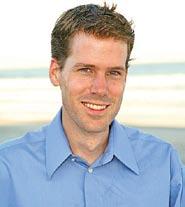
Jonathan Estes, author of the book Smart Green, spoke on April 12 at the Sustainability Technologies program at Cape Fear Community College in Wilmington. The program offers a two-year Associates Degree focusing on energy use, building science and renewable energy technologies. Estes’ book, Smart Green, has been adopted as part of the lead instructor’s Issues in Sustainability course.
• long-term care
• short-term assistance

• postoperative or new mother care
• medication monitoring
• relief for family or other caregivers
• accompaniment to appointments
• meal preparation
• assistance with daily living
• supplemental assistance in nursing home
• alternative setting care at vacation site
• short-term care for special-needs visitors

Sixty UNC–Wilmington Students Attend PowerShift 2011
In April, sixty students from UNCW made a trip to our nation’s capital to be a part of Power Shift 2011, the largest organizing training in history. More than 10,000 students and community leaders, representing every state in the country, were present. North Carolina was the second most represented, with over 400 students present to bring grassroots organizing power back to their campuses and communities.
Power Shift is a biennial national conference held with the purpose of uniting and training students who stand for environmental and social justice. There were workshops, panels, and trainings covering topics such as building a clean energy economy, politics in relation to the environmental movement, and sustainability on college campuses.
Al Gore, Van Jones, EPA administrator Lisa Jackson, and 350.org founder Bill McKibben were just a few of the influential speakers that came to address the large turnout. The weekend ended with a march of about 2,000 people of all ages to the
contributed
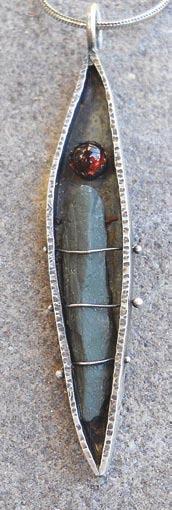
Shown are all the students from universities across North Carolina, the second highest represented state at the 2011 Power Shift, who are now part of the NC Student Energy Network.
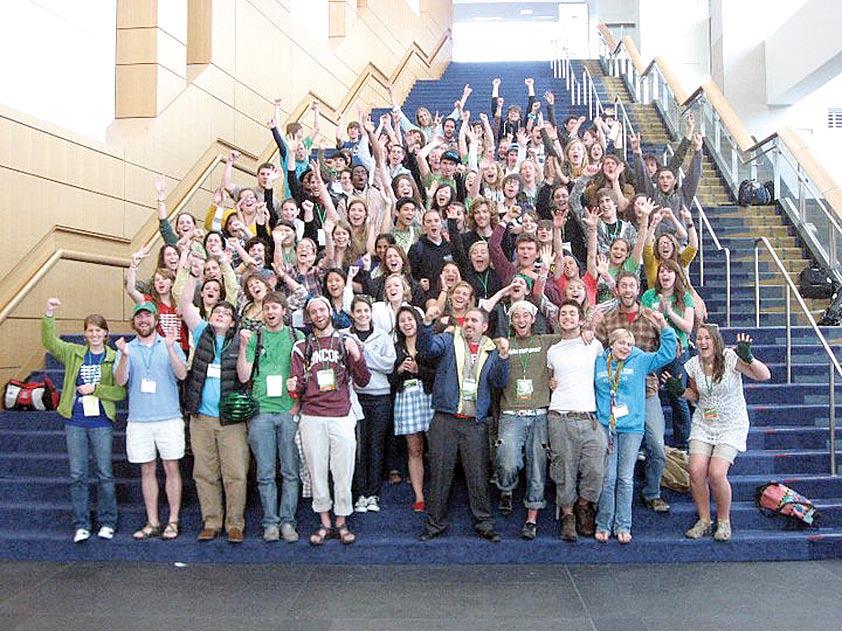
U.S. Chamber of Commerce, BP lobby headquarters, and the GenOn facility.
UNCW student Megan Johnston summed up the intent of the youth environmental movement by saying, “We must work to stop large corporations who

are sacrificing our Earth in favor of profit and work with our elected representatives to make choices that protect our environment.”
Learn more about Power Shift 2011 at http://www.powershift2011.org.
business news
The Turtles Are Coming! Art Project Is Here
As a fundraiser for The Karen Beasley Sea Turtle Rescue and Rehabilitation Center, Surf City Art Guild has launched 21 fiberglass turtles that will travel through the Cape Fear area. The opening reception, titled “The Turtles Are Here!,” was the kick-off for a 21-turtle migration of sponsored turtles through the area, which will culminate in an auction at the Assembly Building in Topsail Beach to be held on September 30.
The turtle center is under construction in Surf City, North Carolina, and is due to be completed late this summer. The “Turtles Are Coming!” art project will help them raise some of the $200,000 they still need in order to fund the building.
Learn more about the project at www. surfcityartists.com, or email them at surfcityartists1@gmail.com. Learn about the Karen Beasley Sea Turtle Rescue and Rehabilitation Center at www.seaturtlehospital.org.
Sustainable Saturdays at Cape Fear Green Building Alliance

Cape Fear Green Building Alliance (CFGBA) will launch a series of workshops for the public at the Building Performance Training Center beginning Saturday, May 7, 2011. The hour and a half long Sustainable Saturday sessions will educate homeowners in energy efficiency basics, providing helpful hints on how to save money with green home improvements. Courses offered are:
• May 7 The Home as a System
• May 14 Sealing the Building Envelope for Energy Savings






















• May 21 Taking Advantage of Incentives for Energy Improvements
• May 28 The Ins and Outs of Remodeling


• June 4 Focusing on Energy - HVAC, Lighting, Water Heating and Appliances
• June 11 Focusing on Energy: Renewables
• June 18 Indoor Air Quality
1st Crawl Environmental Festival— Saturday, May 14th , 2011
Oak Island
Parks & Recreation
Department invites you to join in on this one-of-a-kind great environmental festival at Middleton Park, Oak Island, featuring live entertainment, informative speakers on sea turtles, sea birds, and marine rescue,
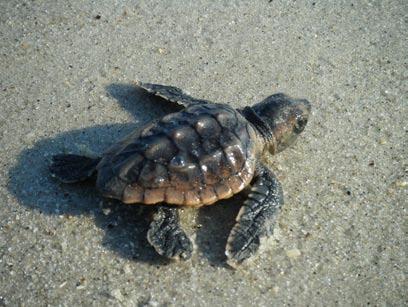
A new
along with kids’ games and rides, arts & crafts, food, and both an individual and team Turtle Triathlon.
The event will highlight the work being done in our community to save our natural marine and other resources. The concert will be headlined by The Cosmic Groove Lizards, along with other bands. The Team Turtle Triathlon will start at 8am and the festivities at the park will begin at 10am.
For more information on any of the festival events, or to apply for a booth at the festival please contact (910)278-5518 or www. oakislandnc.com/recreation.
• June 25 Water Resources and Conservation
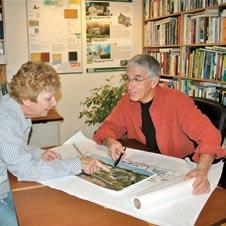
Sustainable Saturdays are FREE for CFGBA members and $10 per class for non-members. The sessions will be held at 9 and 10:30 a.m. with seating limited to 30 participants, and will be on a first-come, first-served basis. Visit www.cfgba.org for more details, or call the CFGBA office at (910)470-5697.
Details to be announced at Paw Jam May 7, 2011, or call (910)547-4390.

